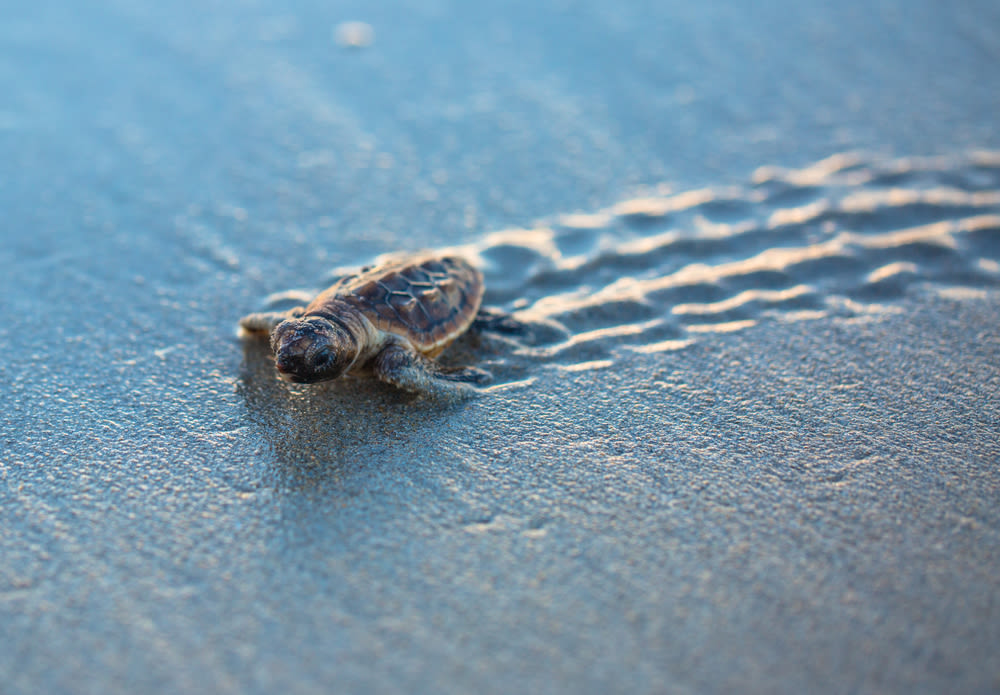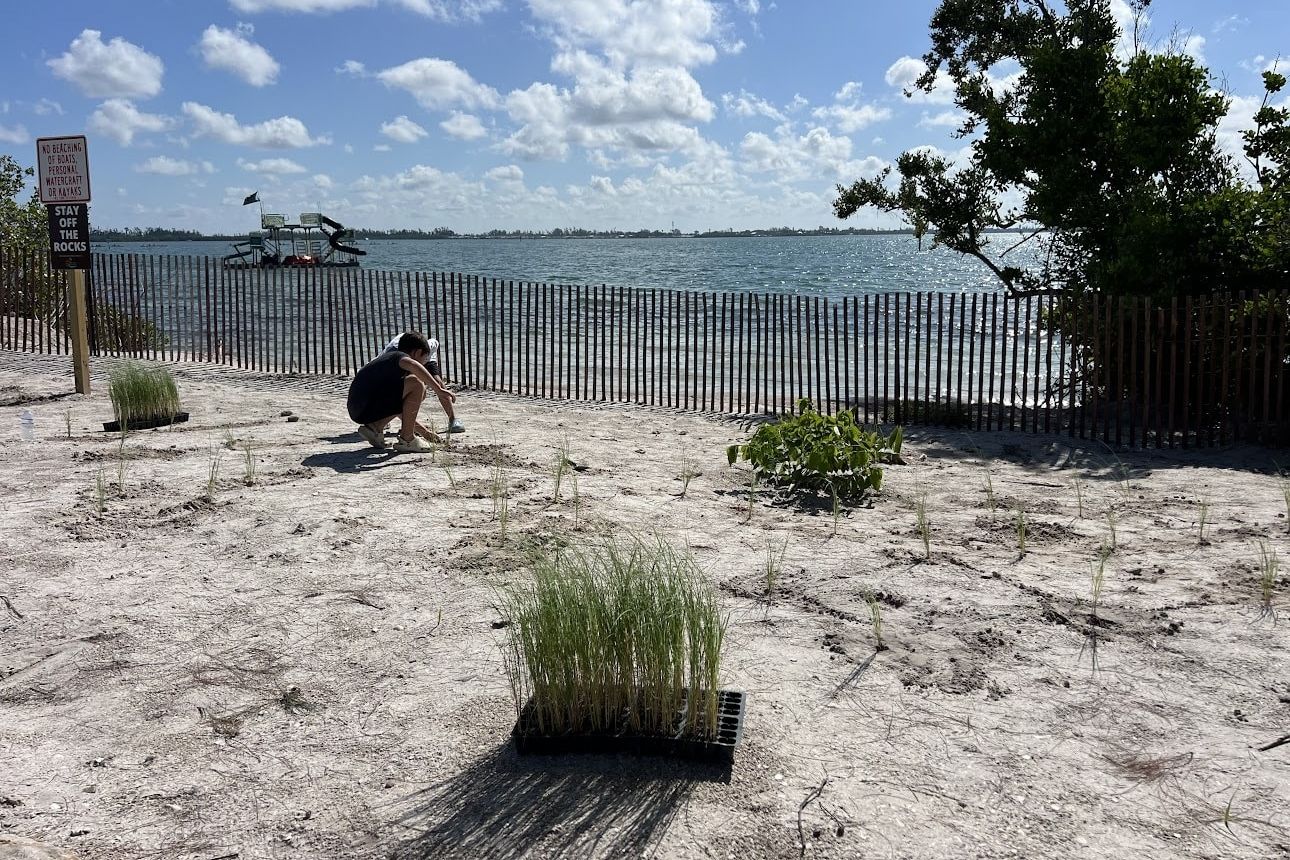Sea Turtle Nesting Season Is Back on Florida's Gulf Coast

A baby sea turtle makes its way to the ocean.
Image: Shutterstock
Sea turtles have been swimming the world’s oceans for 100 million years, but today their future is precarious. Sea turtles can get caught in the nets of the global fishing industry, are hunted for meat, eggs and leather, and are losing beachside nesting areas because of uncontrolled coastal development. Almost all sea turtle nesting in the United States takes place in Florida between May and October, and both Sarasota and Manatee counties are hotbeds of sea turtle reproduction.
Our Species
Five different types of sea turtles nest on Florida beaches: the loggerhead, the green turtle, the leatherback, the hawksbill and the Kemp’s ridley. Loggerheads are far and away the most commonly spotted sea turtles in Sarasota and Manatee counties.
After Dark
Most female sea turtles return to the same beach year after year to nest, crawling out of the water at nighttime, digging a nest with their flippers and then laying between 80 and 120 eggs. Incubation takes roughly two months. It is estimated that only one in 1,000 baby turtles will survive to adulthood.
The 2018 Drop
The number of sea turtle nests observed on local beaches plummeted last year due to red tide and other harmful algal blooms. Researchers spotted just 6,090 loggerhead nests in Sarasota County in 2018, compared to 7,589 in 2017 and 8,276 in 2016. An estimated 116 sea turtles were either killed or left stranded by red tide in Sarasota County alone during last year’s bloom.
Turn Out the Lights
Turtles only nest in the dark and avoid beaches with artificial lighting, which can often lead them to nest in dangerous stretches of sand. Also, when baby turtles hatch, lights can disorient them and encourage them to crawl away from the water, rather than toward it. If you live near the beach, cut off your outdoor lights during nesting season. Indoors, install blinds, tint or window film.
Other Threats
Erosion, seawalls and even sandcastles and beach umbrellas can also lead to greater sea turtle deaths by creating obstacles babies must navigate before reaching the water.
Sex Change
Because the sex of a baby turtle is determined by the temperature of the sand in which the egg incubates, climate change is expected to skew the ratio between male and female turtles toward more females.
Step Up
Each summer, Mote Marine Laboratory scientists, interns and volunteers patrol 35 miles of beaches from Longboat Key to Venice for signs of sea turtle nests. Want to help out? Visit mote.org.



